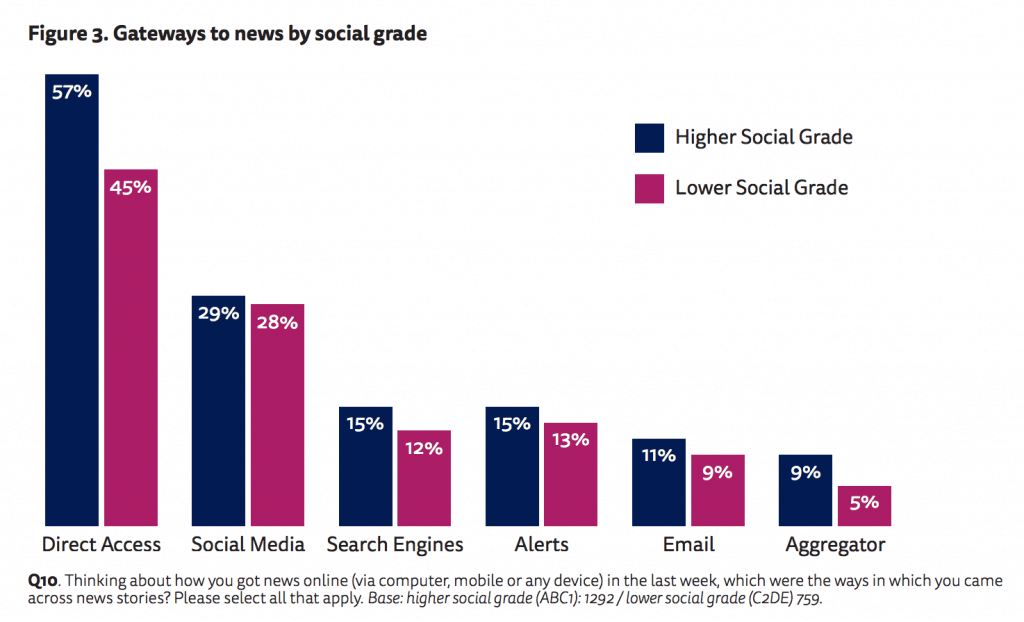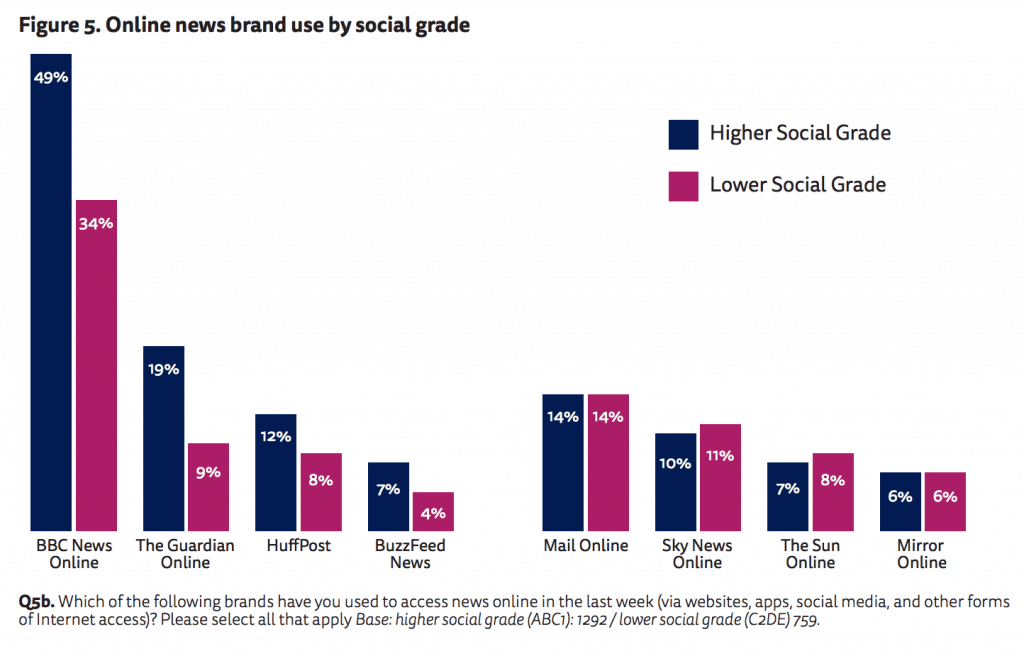
Inequality is a favourite topic among many these days. Economists, political scientists, even the IMF – all point to inequality as an important factor for the current state of affairs in many countries. But while pundits usually talk about income inequality, fewer people look at a no less important form: news inequality.
And at least for the UK, a new study by Reuters Institute for the Study of Journalism has now found that news is even more unevenly distributed than income. According to the authors, Antonis Kalogeropoulos and Rasmus Kleis Nielsen, poorer people consume significantly less news than wealthier people. The difference between the two groups is particularly strong online, where poorer people are less likely to go directly to a source of news. The only similarity, it seems, is that both poorer and wealthier peoples are equally reliant on news ‘intermediaries’, such as social media and search engines.

News Consumption Is More Unequally Distributed Than Income
The study, ‘Social Inequalities in News Consumption’, measured the number of news sources – both online and offline – used by individuals in the UK, according to their social grade. Despite some offline news sources, such as the Sun, the Mirror and ITV News, having higher usage among those in lower social grades, there are no online sources which have significantly more users from poorer backgrounds.
The study also finds that news consumption, particularly online, is more unequally distributed in the UK than income is – measured on the basis of the number of news sources used on a weekly basis. The Gini coefficient (a statistical measure of distribution developed by the Italian statistician Corrado Gini. It is often used as a gauge of inequality), for news consumption inequality measured 0.42 for offline news sources (on a scale of 0 to 1, with 1 being maximum inequality) and 0.55 for online sources. For comparison, the GINI coefficient for income inequality in the UK is 0.36.
The study further finds that around a quarter of the UK population do not access news online, with a comparable proportion accessing just one online news source. Of the offline news sources studied, The Times, the Guardian and BBC Radio news are more popular with those in from wealthier background whereas the tabloids such as the Daily Mail and the broadcaster Sky News each have a similar proportion of users from better and less well off backgrounds.

A Critical Challenge To An Informed, Empowered, And Resilient Public
Commenting on the findings, lead author Antonis Kalogeropoulos said: “As we move towards an increasingly digital media environment, the social inequality documented here is likely to increase. While less visible than the political polarisation of some people’s news use, we would suggest that such social inequalities in news use – here analysed in terms of social grade, but also potentially pronounced in terms of for example age, gender, or ethnicity – is at least as important as the question of how highly motivated and often vocal, and hence visible, partisans use news. In principle, most journalists would like news to reach everybody more or less equally, irrespective of social grade. Despite the ease of accessing news online, today, that is clearly not happening.”
His co-author Rasmus Kleis Nielsen added on Twitter how important is not only to look at polarisation or income inequality but “to pay attention to less visible growing social inequality in news use”, which he calls a “critical challenge to an informed, empowered, and resilient public.”
The full report is published by the Reuters Institute for the Study of Journalism and can be found here.
You might also be interested in Digital News Report: Use Of Social Media For News Falls.
Sign up for the EJO’s regular monthly newsletter or follow us on Facebook and Twitter.
Tags: Digital News Report 2018, inequality, journalism and social media, News consumption, Reuters Institute, Reuters Institute for the Study of Journalism, Social media














































